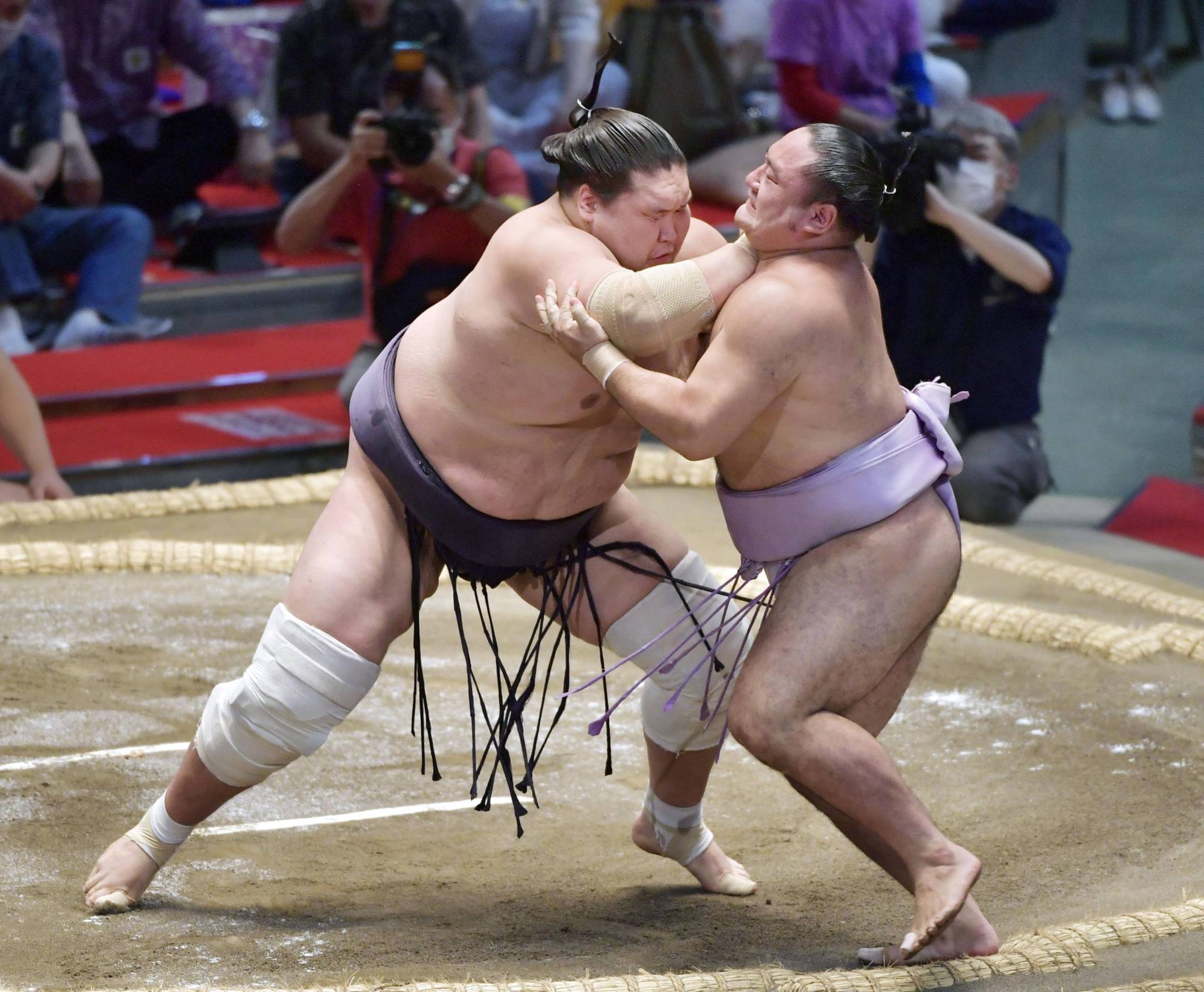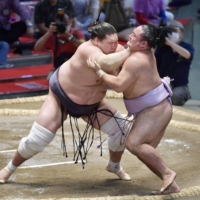Great rivalries are the beating heart of sumo.
From Umegatani and Hitachiyama in the 1900s to Asashoryu and Hakuho a century later, virtually every era in modern sumo history has been defined by its marquee pairing.
Ticket sales surge and ratings peak when two dominant rikishi struggle for supremacy.
The Japan Sumo Association and the media organizations that cover it are clearly aware of this fact — as evidenced by the countless DVDs, magazines, trading card sets, and television shows on the topic that have been produced down through the years.
Interestingly, Wakanohana and Tochinishiki aside, few of the sport’s most famed pairings have been remotely close in terms of titles won.
Despite the 1960s widely being referred to as the Haku-Ho era — a combination of yokozuna Taiho and Kashiwado’s names — Taiho’s 32 championships far exceeded the five won by his rival.
Similarly, Kitanoumi hoisted the Emperor’s Cup on ten more occasions than Wajima, while Chiyonofuji has more titles than seven other yokozuna around him in history combined.
Tussles between Akebono and Takanohana hogged the limelight all through the 1990s even though the Hawaiian native’s 11 Emperor’s Cups totaled half as many as those taken by his Japanese counterpart.
Of course, differing backgrounds in that case created a fascinating narrative that fueled interest. Takanohana came from sumo royalty and was the sport’s anointed heir from an early age, while Akebono was a poor kid from Waimanalo aiming to become the first foreign national to reach sumo’s highest rank.
Head-to-head the two yokozuna split their 48 meetings right down the middle and the ultra-competitive nature of those bouts, as well as the fact that in many cases they were title deciders, was what that ultimately made them unmissable for fans.
Since the forced retirements of Asashoryu and (to a lesser extent) Harumafuji, sumo hasn’t enjoyed the same kind of headline rivalry, but in recent months Takakeisho and Terunofuji have done their best to revive the spirit of those old titanic clashes.
Now, as the July tournament heads into its closing stanza, the latter rikishi is setting up the kind of dream finale that every fan hopes for, but few get to see.
Since the advent of the 15-day system, there have only been five occasions on which two wrestlers went into their final day matchup unbeaten. Three of those occurred in the 1960s, one in the 1980s and the most recent in 2012.

All eight men that have participated in sumo’s version of the perfect storm eventually reached yokozuna, with Harumafuji being the only one not yet to have done so when he took on and defeated Hakuho for the title nine years ago.
As the tenth day of action came to a close in Nagoya this week, Hakuho and Terunofuji — both looking increasingly comfortable — stood atop the leaderboard with 10-0 records.
None of the opponents either man will likely face before their final day showdown should strike too much fear into their hearts — though Terunofuji has had a lot of trouble with Takayasu in the recent past. If the big Mongolian can keep his incredible run going it will set up the most exciting conclusion sumo has seen in decades.
A win against the greatest rikishi the sport has ever seen to cap the most implausible comeback in the history of the sport with a perfect record and promotion to yokozuna is the stuff of Hollywood fantasy, but that’s exactly what’s on the line this weekend.
Of course, even if Terunofuji makes it to day 15 unbeaten – something he has yet to do – the ozeki can expect the fight of his life. Since that 2012 loss to Harumafuji Hakuho has gone 14-1 or better on 19 occasions — and lifted the Emperor’s Cup every single time.
Head-to-head Hakuho also boasts a 9-4 lead but most of their bouts took place when both men were in a very different place. It’s been more than four years since they faced each other in the ring and so much water has passed under the bridge since their last meeting, those past bouts are essentially irrelevant.
If Terunofuji falls to Hakuho on the final day, he could be promoted to grand champion. The oft-cited criteria include two consecutive championships or the equivalent. Coming off titles in March and May, Terunofuji stands a very good chance of getting the white rope even with a runner-up performance. The key will be to remain competitive into the final weekend.
Every bout between now and Sunday will be high pressure for the ozeki, but he has never been one to let nerves get the better of him. Numerous setbacks suffered over the past five years have also resulted in a more mature outlook – one not prone to highs and lows.
Terunofuji has stated that he’ll be comfortable with the outcome regardless of whether or not he makes it to yokozuna. With a chance to make history staring him in the face, however, there is no doubt he’ll do everything he can to make it to the final weekend unbeaten.
Hakuho likewise has blown away all talk of retirement and looks to be in his best form in years.
With 44 titles and virtually every sumo record of note under his belt, the yokozuna isn’t under the same kind of pressure to win as Terunofuji. One doesn’t earn the title of G.O.A.T without having an ultracompetitive nature, however, so if the title is on the line for Hakuho next Sunday, expect a titanic effort.
The stage is set for a battle for the ages.
Fingers crossed.
In a time of both misinformation and too much information, quality journalism is more crucial than ever.
By subscribing, you can help us get the story right.
SUBSCRIBE NOW
KEYWORDS
Hakuho, Terunofuji




